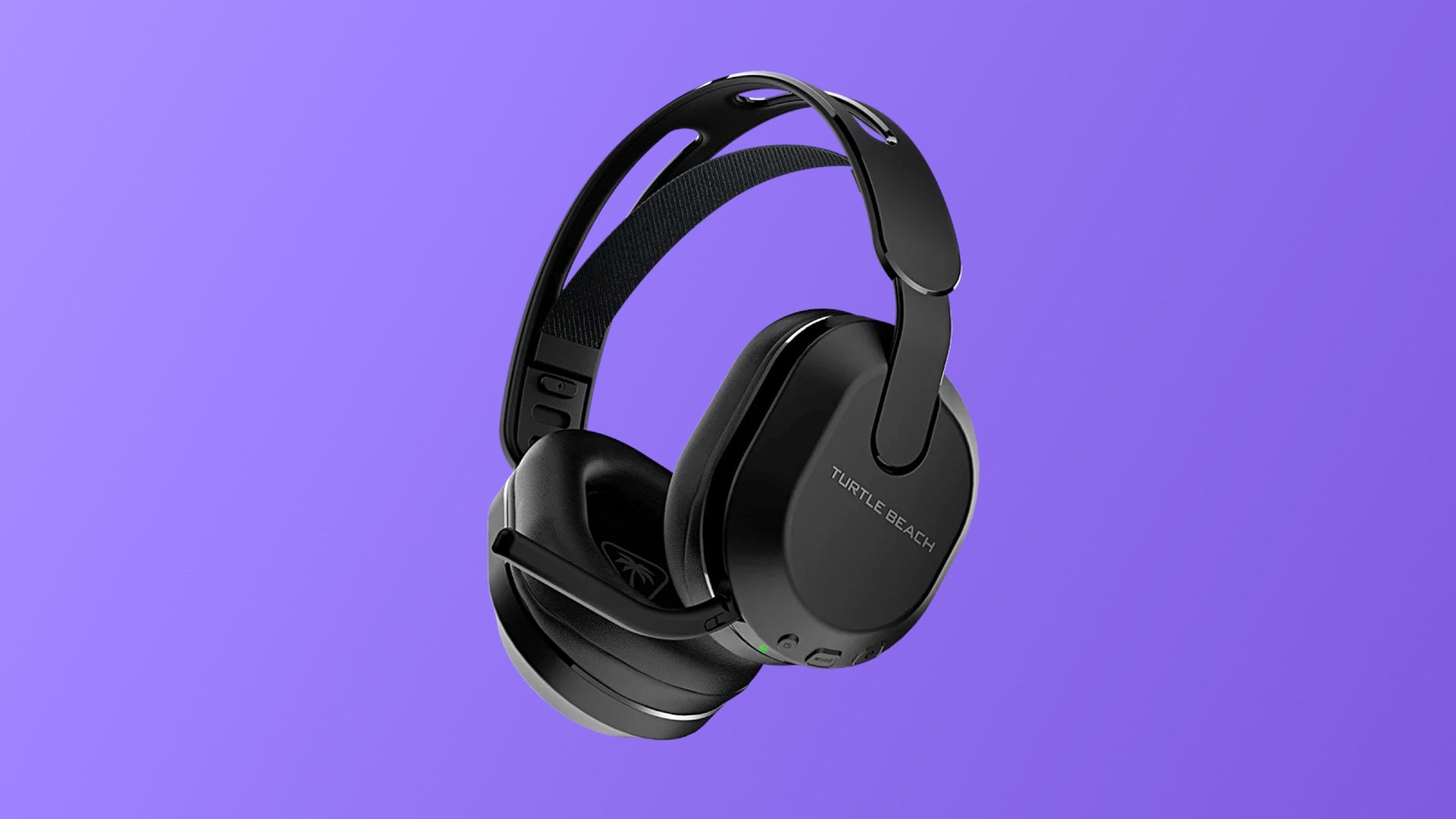Turtle Beach has made the Stealth series of headsets its flagship gaming products for quite some time now, and have a well-established reputation as having solid choices. As its product line has grown, there’s an option for nearly every price range and the Stealth 500 fills a gap in the budget-to-mid tier. It rounds out Turtle Beach’s lineup to deliver something of similar quality, and the results are quite nice. It might not be the most fully featured option compared to more premium headsets, but bold, balanced sound and decent comfort make the Stealth 500 a great choice as an affordable wireless gaming headset.
Turtle Beach Stealth 500 - Design and Comfort
The first thing I noticed about the Stealth 500 was its flexible unibody headband, which may look cheap but can bend and contort without feeling like it’s going to break – this design keeps the headset light and durable at the same time. However, take note that because of that unibody design, you cannot adjust the position of the earcups or extend the headband. While this did not end up being too much of a problem for me, those of you who tend to adjust other headphones close to their maximum extension may have trouble fitting this headset.
Similar to the SteelSeries Arctis lineup, the Stealth 500 has a stretchable strap on the inside of the headband to create a more secure fit and provide some cushioning for the top of your head. Notches along the inner sides of the headband let you adjust the tension on the strap, and the headset fits well enough when putting it onto the loosest setting. While the earcups fit around my ears just fine, there was a bit of pressure on the top of my head that was noticeable during longer sessions.
The Stealth 500’s plushy earcups offer fairly deep padding and the leather-like upholstery makes for a nice finish. They’re solid when it comes to natural sound isolation, but I personally prefer a sport-mesh or velour finish since any leather-like material tends to get hot and cause a bit of sweat after a few hours. That said, the relatively light clamp force makes them an easygoing headset to wear and helps mitigate some of that muggy feeling I’d normally expect – even after three hours of continuous wear, I never felt discomfort around my ears.
To add a bit of versatility, the Stealth 500 has both 2.4GHz wireless connectivity, with the packaged USB-A dongle, and Bluetooth. You can swap between the two modes with the press of a button on the left earcup. While that’s pretty straightforward stuff, one minor gripe I have is with how all the buttons are laid out on the headset itself. The chat-volume mix, main volume wheel, mode swapping button, Bluetooth button, and power button are all crammed in on the left earcup and there’s little tactility to help distinguish one button from another. I got used to it over time, but we’ve seen better designed controls on other headsets, budget-level or otherwise.
Turtle Beach Stealth 500 - Software, Utility, Battery Life
The Stealth 500 headset I received required a firmware update before using, but after the brief update, it connected easily to my phone via Bluetooth and was ready to go on PC with the 2.4GHz dongle. You’ll need to download the Swarm II app either on desktop or mobile to customize your settings on the headset, and thankfully it’s a very straightforward app without any bloat. It's worth mentioning that the mobile version is streamlined with the essential options while the desktop version offers 10-band EQ customization and mapping hotkeys to change settings on the headset itself.
With the Swarm II app, you can monitor battery life and enable features like chat boost or Superhuman Hearing (more on that in a minute), swap between a few audio presets, and monitor what your game-chat volume mix is set at. The microphone is also customizable with options to adjust mic sensitivity, noise gate, and the monitoring volume (aka sidetone), all of which you’ll appreciate if using the built mic, of course.

Turtle Beach has included its Superhuman Hearing technology on its modern headsets, and while I respect the effort behind it, I just never find it to be useful. It has three settings – legacy, footsteps, and gunshots – to amplify specific sound effects in games at the expense of every other audio characteristic. What you get is a pretty artificial audio profile that I personally think detracts from the overall experience for minimal to no advantage. Of course, it’s optional so it’s not necessarily a knock against the Stealth 500, just be aware of what that feature is.
Battery life is rated at a reasonable 40 hours from a full charge. I used my Stealth 500 for roughly 30 hours of active listening between music and games over the course of three days, and it was at 17% when I checked, so I’d say that’s an accurate assessment.
Turtle Beach Stealth 500 - Sound Quality and Microphone
One of the things that stood out to me immediately was the bold and balanced sound profile of the Stealth 500 when using the Signature Sound preset in the Swarm II app. It had enough clean bass to create a full audio experience in both music and games, and decent mids and highs at reasonable volumes. The highs can get quite harsh at louder volumes, and generally you’d hear more robust headsets handle those frequencies more gracefully. But for a budget/mid range headset, I’ve come away impressed with the Stealth 500’s overall sound quality.
My time playing Final Fantasy XIV highlighted many of the Stealth 500’s characteristics, with all kinds of sound effects blasting during raid sessions and its fantastic soundtrack playing at all times. It’s a fairly busy game audio-wise and the headset handled it well, barring the aforementioned shortcomings with higher frequencies with some attacks/actions really brushing against that end of the audio spectrum.
As always, I run at least three ranked matches of Counter-Strike 2 to get a sense of how headsets handle competitive games where audio has a genuine impact on your success. Positional audio was fine and detailed enough to help me anticipate the direction of footsteps and gunfire, but I wouldn’t say it gave me a particular advantage the same way higher end headsets have before. And I say this having tried other audio presets (and even Superhuman Hearing). This will matter much more at higher competitive levels, but if you’re a more casual competitive player, I doubt the Stealth 500 would be a bottleneck in your performance.
If you plan on using the built-in microphone for communication, you may come in somewhat quiet. Otherwise, the mic quality doesn’t particularly stand out, coming out a bit muffled as heard in a recording using Audacity and from Discord calls. It gets the job done, but if a high-quality microphone is one of your priorities, you’re probably looking at going into higher price ranges for your headset.






